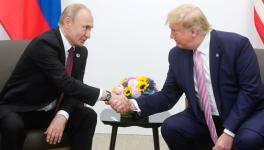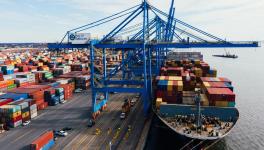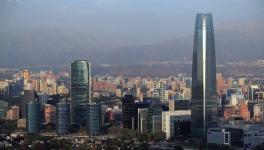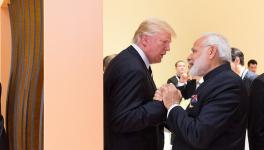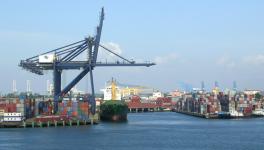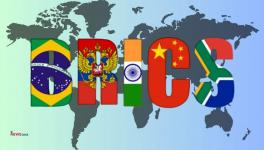US-China Tariff Truce: A Gesture of Stability Amid Systemic Rivalry
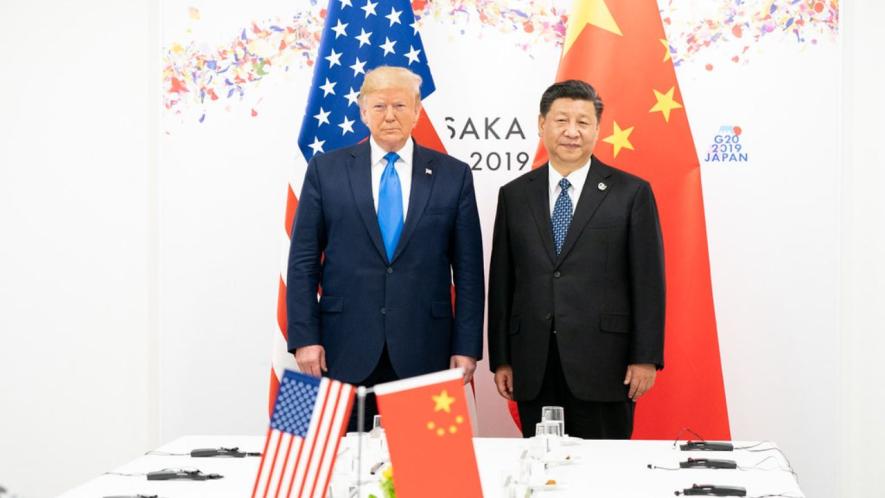
image Courtesy: Flickr
The 2025 tariff reduction agreement on May 12, 2025 between the United States and China, which lowered punitive tariffs to 30% from 145% and 10% from 125%, respectively, for 90 days, has been framed as a diplomatic breakthrough. While this truce alleviates immediate economic pressures, especially for the US, it represents a tactical de-escalation rather than a strategic resolution to the systemic contradictions that confront US imperialist hegemony.
The tariff truce emerges against a backdrop of escalating strategic contests that span the domains of technology, military wherewithal, and the restructuring of global production networks. While cosmopolitan neoliberals would characterise these trends as an erosion of multilateral governance, in reality, these trends reflect the impasse reached by the capitalist system during the neoliberal phase of the capitalist system.
Macroeconomic Implications
The tariff rollback delivers some temporary macroeconomic stabilisation. For the US, it mitigates inflationary pressures linked to disruptions in its production and distribution networks that were initiated by Trump’s trade war. This offers retailers and manufacturers some respite from elevated input costs and working people some relief from tariff-induced inflation.
China obtains more time to restructure global production networks and, therefore, its exports and imports. The need for policy measures to deal with the short-term impact of the trade war on employment has been postponed. However, these measures do not address the broad contours of the strategic contests between China and US monopoly capital.
The US continues to pursue (often vainly) friend-shoring of global production networks through explicit industrial policy initiatives like the CHIPS and Science Act and the Inflation Reduction Act, along with export control measures to try and slow down China’s further ascent of the technology ladder that pertains to global production networks.
Since China is either a threshold economy or leader in almost all areas of high technology, these technology containment measures by the US government are increasingly becoming ineffective. Moreover, since China has capital controls, it is able to integrate its ascent of the technological ladder pertaining to global production networks into its regulation of macroeconomic demand as part of its industrial policy.
Read Also: Trump’s 2025 Tariff War Folly
Cosmopolitan neoliberals characterise these parallel trajectories as reflective of a broader retreat from inter-dependence. But in fact, the previous pattern of global production and financial networks, where US monopoly capital was at the centre, is being restructured into one involving the emergence of multipolarity in international political economy. Southeast Asia, for instance, is emerging as a nexus for reorganised global production networks, with trade increasingly denominated in local or digital currencies—a trend accelerating de-dollarisation and diminishing the reserve currency status of the US dollar.
This makes evident the fragility of the détente involving the tariff truce. Even if trade resumes in a manner analogous to what was the case before the current round of Trump’s trade war began, it is indisputable that the dislocations to production and distribution networks triggered by prior tariffs will take many weeks to dissipate in the US economy, which is likely to have adverse second-order effects on private investment.
International rentiers are jubilant at the emergence of the tariff truce, as is reflected in the short-term rise of asset prices of various kinds. Unlike those steeped in the ideology of Trump’s MAGA (Make America Great Again) world, international rentiers were quite aware of the actual contours of the strategic power array between US monopoly capital and China.
This is why the China-centred trade war launched by Trump led to a certain loss of confidence in the dollar. Therefore, the US Federal Reserve’s reluctance to cut interest rates in order to retain the dollar as a viable medium for holding wealth globally is understandable, except by Trump’s closest advisors. Trump’s advisors want to have their cake (maintain the international reserve currency status of the dollar) and eat it too (reduce interest rates), when changes in contemporary international political economy regarding the diminishment of US imperialist hegemony have made this impossible. The chatter among international rentiers about the gargantuan debt burden of the US and how this needs to be reduced is reflective of this aforementioned diminishment.
Challenges Facing Rest of the World
The World Trade Organisation (WTO) emerged as an instrument strategically employed by metropolitan capital to open up the economies of the Global South in two interrelated ways. First, it facilitated the expansion of exports from metropolitan economies to Global South countries.
Read Also: The Strategic Myopia of Trump’s Trade War
Second, it encouraged the Global South to increase its exports, predominantly of primary commodities and goods situated in the lower and lower-middle segments of the global technological hierarchy, primarily through integration into global production networks, often mediated by foreign direct investment originating from metropolitan economies. These investments largely took the form of mergers and acquisitions, though not exclusively so.
However, China represents a significant exception among Global South countries. During the era in which the WTO played a dominant role in governing international trade, China successfully ascended the technological ladder in a comprehensive manner.
This development has led metropolitan capital, particularly US monopoly capital, to perceive the WTO as an impediment to its capital accumulation objectives. Consequently, there has been a deliberate effort by metropolitan capital, especially in the US, to marginalise the WTO. Cosmopolitan neoliberals interpret this marginalisation as a retreat from multilateralism, largely because they equate multilateralism with the maintenance of US imperial hegemony.
US monopoly capital is now actively seeking to pressure the ruling classes of various countries into entering trade arrangements that serve its interests while being detrimental to China. Such initiatives have been directed toward Europe, Asia, and other regions. Nevertheless, the ruling classes of these nations remain cognisant of the current strategic balance of power within the international political economy. As a result, they are unlikely to align themselves exclusively with US financial interests in their trade engagements.
Conclusion
The Geneva agreement functions as a ceasefire that institutionalises rather than resolves systemic contradictions in international political economy. The 90-day timeframe of the agreement reveals its fragility. The root cause of these systemic contradictions is threefold:
One, the policy-induced shrinking of the share of wages in the world economy—in order to try and restore price stability by increasing precarity and unemployment in the neoliberal phase of the capitalist system—has ignited a tendency toward stagnation in the world economy. Use of fiscal policy to reverse this tendency toward stagnation will undermine price stability. The proclivities of international finance capital centred in the US “spontaneously” enforce this aversion toward fiscal policy.
Two, China, through its system of domestic political economy, has enabled its comprehensive ascent of the technological ladder that pertains to global production networks in ways that undermine US imperialist hegemony, including becoming the leading exporter of commodities in all reaches of that technological ladder.
Three, the joint impact of points one and two has resulted in a squeeze on the ability of US monopoly capital to be the global centre of capital accumulation. This has resulted in the initiation of a crisis of legitimacy for US monopoly capital, which it seeks to deflect through neo-fascism of the MAGA variety.
The trade war was a desperate attempt by US monopoly capital to try and reassert its imperialist hegemony. But the tariff truce in Geneva shows the limitations of this desperation, which cannot but be circumscribed by the realities of the strategic array of power in international political economy.
Shirin Akhter is Associate Professor at Zakir Husain Delhi College, University of Delhi. C Saratchand is Professor, Department of Economics, Satyawati College, University of Delhi. The views are personal.
Get the latest reports & analysis with people's perspective on Protests, movements & deep analytical videos, discussions of the current affairs in your Telegram app. Subscribe to NewsClick's Telegram channel & get Real-Time updates on stories, as they get published on our website.









